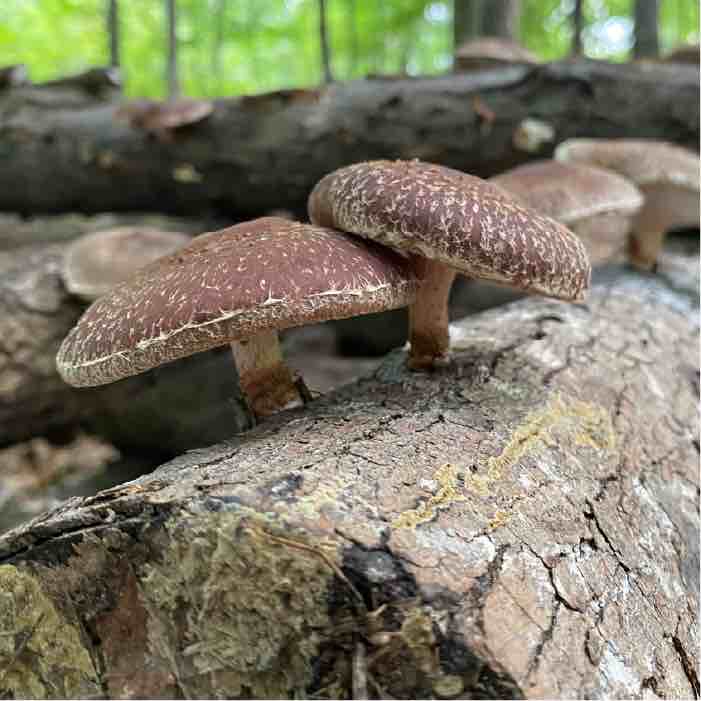
Check 1: Moisture Content
The first and most obvious thing to check for is moisture content. If you have handled a lot of logs you can pretty much tell how green (and not overly dry) it is. If the log is really light in weight compared to others of similar size when you heft it, you need question the overall health of the wood. A light log may indicate the wood was already dead when you cut it. A light-weight log can also indicate over-drying and the condition can be corrected. Check the ends of the logs. If they are cracked, as in Figure 1., and you can slip a dime into the crack, soak the logs for 24-48 hours before inoculation to rehydrate them.
Check 2: Sapwood Health
Next, assess the sapwood of your logs. Sapwood health can be checked while drilling into the logs. Sapwood is important as is provides nutrition of early spawn run and also is a great indicator of the future productivity of the log. As you can see here, the inner wood is bright beneath the bark, indicating a healthy log. A healthy log will be relatively heavy with a continuous ring of light-colored, nutritious sapwood (figure 2). If you take a look at figure 3, the sapwood is starting to disappear on one side, suggesting a decrease in health and thus results in decreased yields. Drilling into it, notice the wood is darker, indicating dead or diseased wood.
Sometimes only a part of the log is dead and you can see the areas by examining drill-outs while drilling (figure 4). Darker drill-outs indicate dying wood. If most if the drill outs are bright white, heavily inoculate the areas around the margins of the pockets of possible dead wood to ensure the spawn can overwhelm any diseased portion, or simple follow the rule: "When in doubt, throw it out".
Check 3: Bark Health
Finally, check the outer bark health. The bark where the end of the log is beginning to separate from the wood will give you a preview to potential problems. Small cracks emanating from the outer bark surface inward indicate uneven drying or curing and can serve as channels for contaminants. Loose, black speckled or dull can indicate that the bark isn't completely set on the log and is even possible to peel off. You can chip off the bark a little to ensure that what you see is not your friend. A complex of diseases: Hypoxylon, Diatripe and Graphostroma are obvious pests of members of the red oak group but have been observed on many, many different wood species. These diseases are ubiquitous and often present in low concentrations in many living trees, but will take off as a threat to the mushroom mycelium if the logs are exposed to prolonged warm and sunny conditions after felling before inoculation.
Figure 5 shows a typical log infected with hypoxylon. These logs will still fruit but the yield will be low, so it bears the question if it's worth the effort.
Just remember that you're putting a lot of effort into inoculating logs, so it's best to start off with the best possibly logs. If you have any questions don't hesitate to reach out to us- we are only as successful as you are!